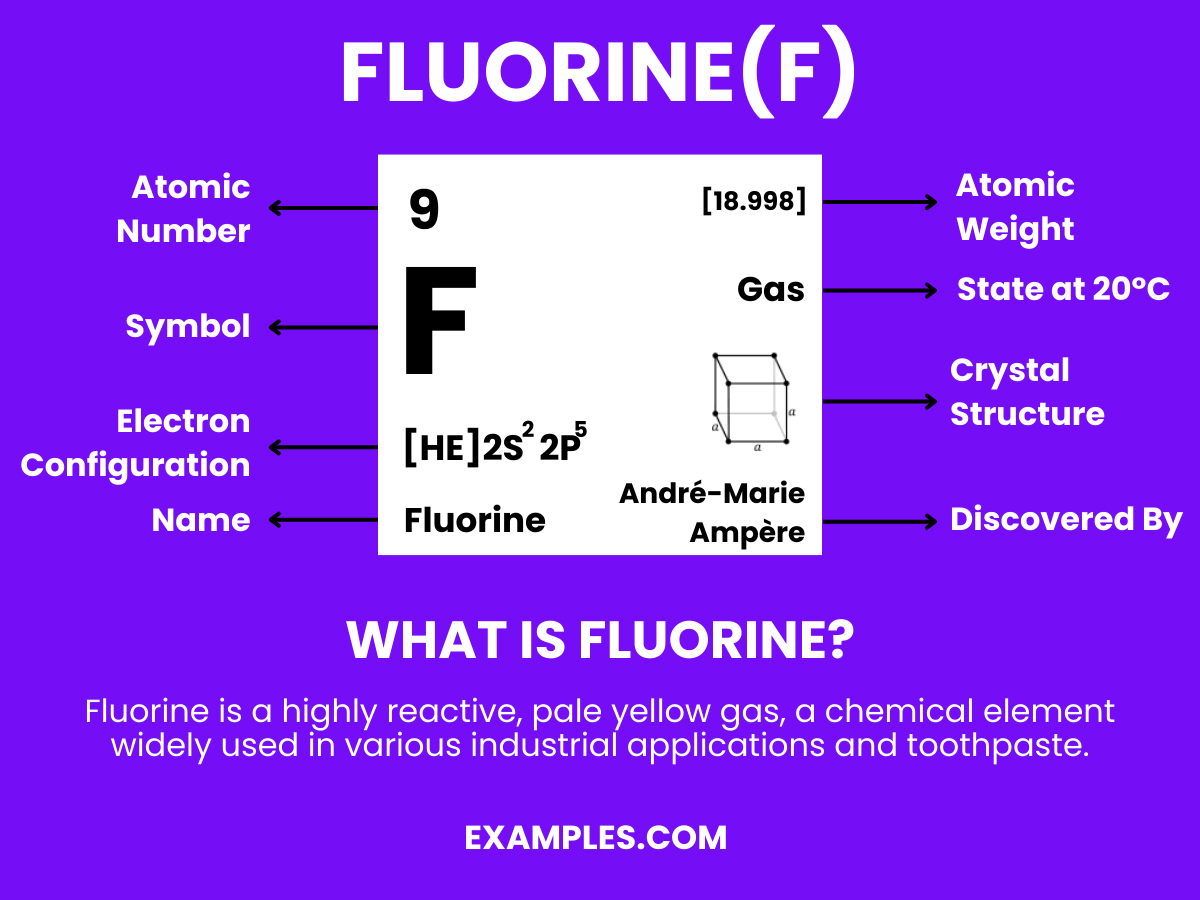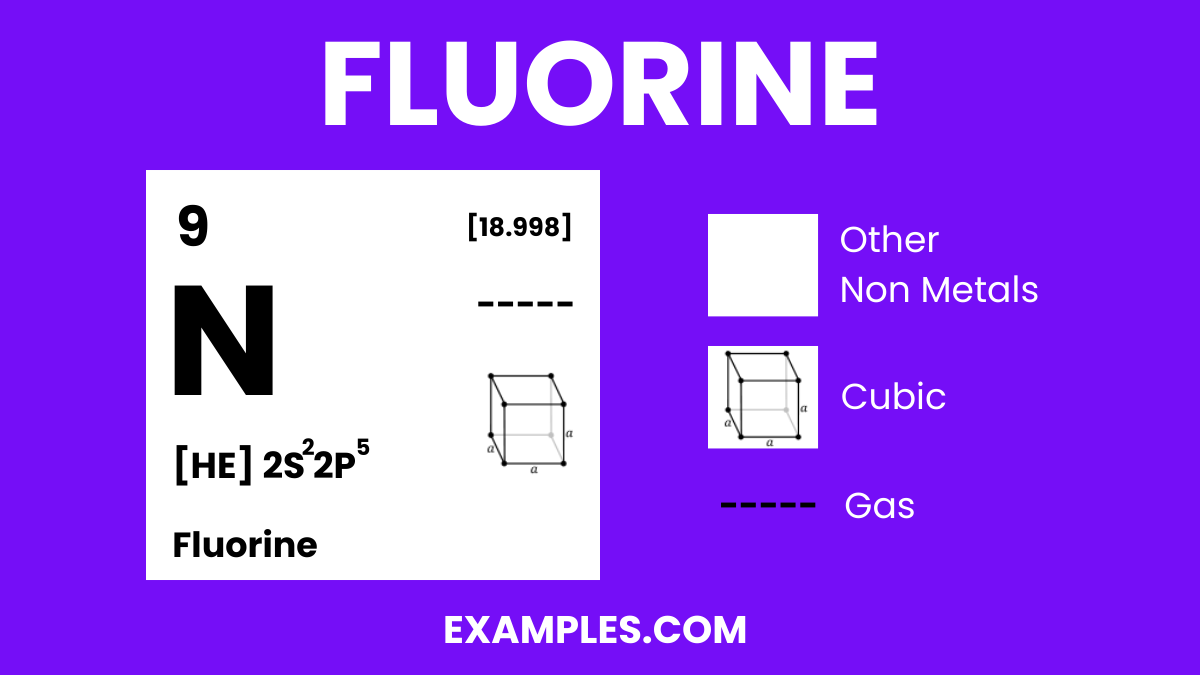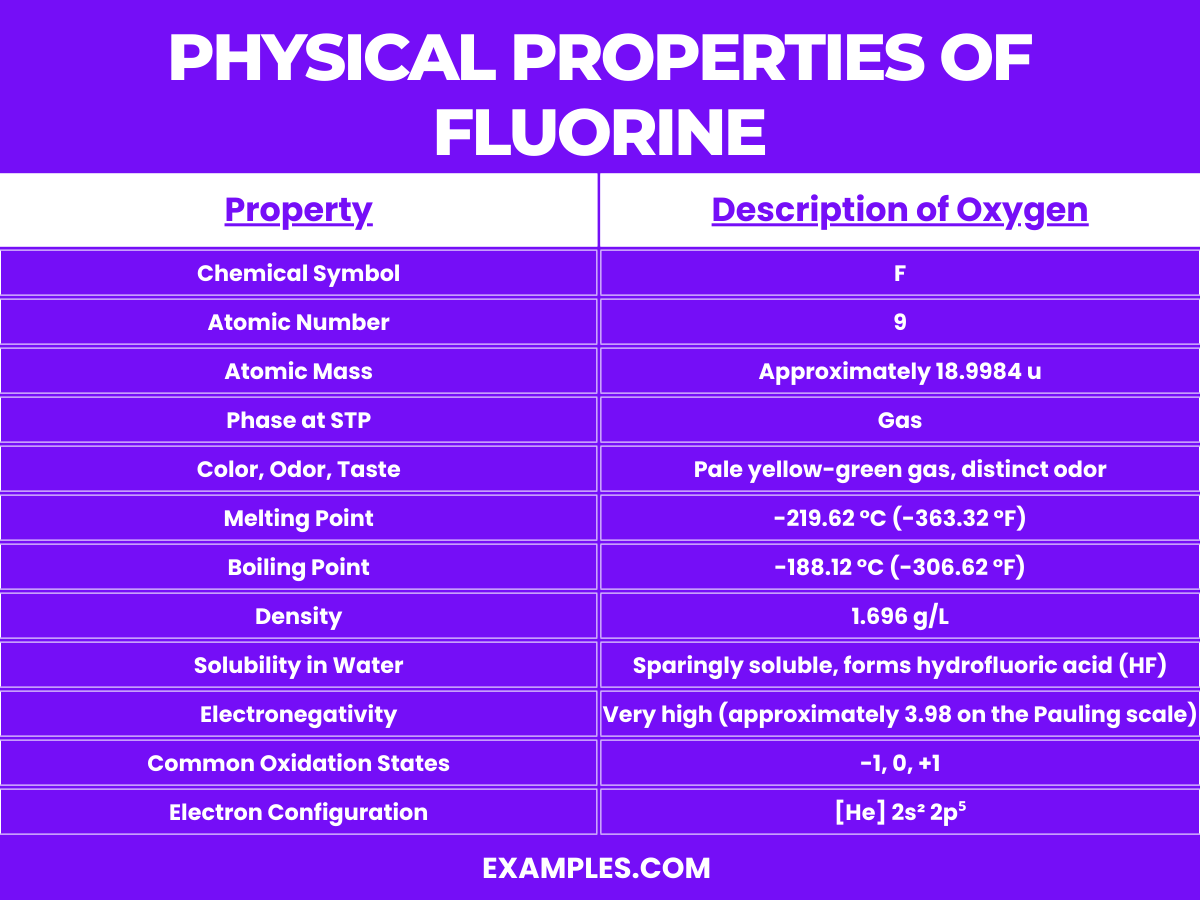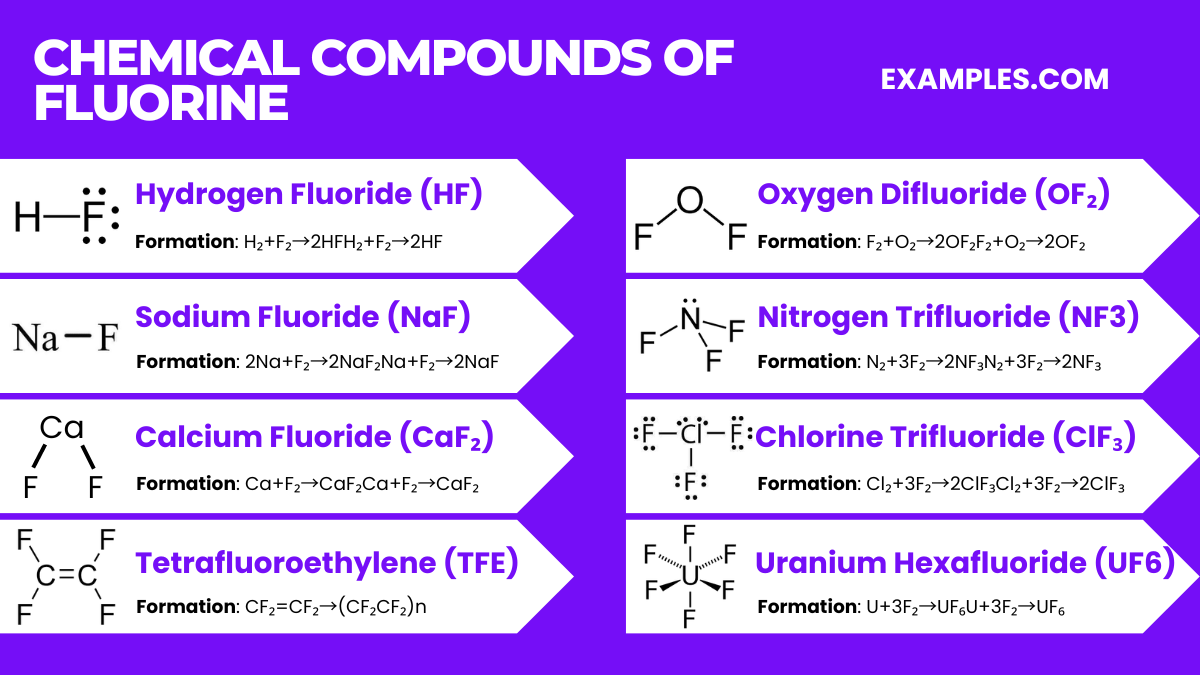What is the atomic number of Fluorine?
7
8
9
10

Dive into the dynamic world of Fluorine, an element of mystery and immense scientific value. This guide illuminates the pivotal role Fluorine plays in chemical reactions, especially when it bonds with Hydrogen to form hydrofluoric acid. Teachers and students alike will appreciate the real-world examples, simplifying complex concepts. Understand Fluorine’s reactivity, its presence in everyday life, and its significance in health and industry, all in a language that resonates with educators and learners.

Fluorine is a highly reactive, pale yellow gas and the most electronegative element in the periodic table. It’s known for its incredible ability to react with nearly all elements, including noble gases under certain conditions. In simple terms, Fluorine is an element that forms compounds by stealing electrons from other elements, a process vital to many chemical reactions in industries and organic chemistry. Its reactivity is why it’s used in many everyday products, from toothpaste to pharmaceuticals, making it a fascinating subject for teachers to explore with their students.
| Hydrogen | Sulfur |
| Carbon | Chlorine |
| Nitrogen | Selenium |
| Oxygen | Bromine |
| Phosphorus | Iodine |


Fluorine (F) is a highly reactive, pale yellow gas at room temperature and is the most electronegative and reactive of all the elements. Its unique properties make it a fascinating element in the periodic table. Here are some detailed chemical properties of fluorine:
| Property | Description / Value |
|---|---|
| Melting Point | -219.67°C (-363.41°F) |
| Boiling Point | -188.11°C (-306.60°F) |
| Thermal Conductivity | 0.0277 W/(m·K) |
| Specific Heat | 0.824 J/(g·K) at 298K |
| Heat of Vaporization | 6.51 kJ/mol at boiling point |
| Heat of Fusion | 0.510 kJ/mol at melting point |
| Property | Description / Value |
|---|---|
| Phase at STP | Gas |
| Density | 1.696 g/L at 0°C, 101.325 kPa (gas) |
| Approximately 1.505 g/cm³ at -188°C (liquid) | |
| Solubility in Water | Reacts with water |
| Color | Pale yellow (in its gas and liquid form) |
| Property | Description / Value |
|---|---|
| Magnetic Susceptibility | Diamagnetic |
| Electrical Conductivity | Non-conductor (Fluorine is a dielectric material) |
| Property | Description / Value |
|---|---|
| Atomic Number | 9 |
| Atomic Mass | 18.998403163 u |
| Neutron Cross Section | 0.0096 barns (for ¹⁹F) |
| Isotopes | ¹⁹F is the only stable isotope |
| Radioactivity | Fluorine has several radioactive isotopes, with ^18F being the most notable for its use in PET scans, having a half-life of 109.77 minutes |

Fluorine forms a wide variety of compounds with almost all elements due to its high reactivity and electronegativity. Here are some of the most notable compounds of fluorine, along with their properties and chemical equations:
Fluorine has several isotopes, but fluorine-19 is the only stable isotope and naturally occurring isotope. Here is a table describing some of the isotopes of fluorine, focusing on fluorine-19 and a few others that have been identified:
| Isotope | Natural Abundance or Mode of Production | Half-Life | Notes |
|---|---|---|---|
| Fluorine-18 | Produced in cyclotrons through the bombardment of oxygen | 109.77 minutes | Used in PET (Positron Emission Tomography) scans in medical imaging. |
| Fluorine-19 | 100% natural abundance | Stable | The only stable and naturally occurring isotope of fluorine. It is used in various chemical applications and studies. |
| Fluorine-20 | Produced synthetically in nuclear reactors or particle accelerators | 11.07 seconds | Used for research purposes, including nuclear physics experiments. |
This table lists some of the isotopes of fluorine, but it should be noted that all isotopes of fluorine other than fluorine-19 are radioactive and have short half-lives, making them less commonly encountered outside of scientific research.
The commercial production of fluorine involves several steps and requires careful control due to the element’s highly reactive and corrosive nature. Here’s a detailed look at the process:
The primary source of fluorine for commercial production is the mineral fluorite (calcium fluoride, CaF₂), which is widely available. The mineral is first converted to hydrogen fluoride (HF) before it is used to produce elemental fluorine.
The health effects of fluorine largely depend on its form (gas or compound) and the concentration or dosage. Here are some of the notable health impacts:
The environmental impact of fluorine and its compounds varies with the form and concentration:
Fluorine is primarily used in toothpaste, pharmaceuticals, Teflon manufacturing, refrigerants, and uranium enrichment processes.
Fluorine can cause severe respiratory issues and skin burns; however, in low doses, it strengthens teeth and bones.
Fluorine is most commonly found in the mineral fluorite (CaF2), used extensively in industries and naturally abundant worldwide.
Fluorine is a highly reactive, pale yellow gas at room temperature, not a metal. It’s the most electronegative and reactive of all the elements.
Fluorine is a highly reactive and versatile element with widespread applications in industry, medicine, and consumer products. While beneficial in controlled amounts, its toxicity and environmental impact necessitate careful handling and regulation. Understanding fluorine’s dual nature is key to harnessing its benefits and minimizing risks, making it a fascinating subject in chemistry and beyond.
Text prompt
Add Tone
10 Examples of Public speaking
20 Examples of Gas lighting
What is the atomic number of Fluorine?
7
8
9
10
Fluorine is the most ___________ element in the halogen group.
Electronegative
Electropositive
Stable
Radioactive
Which of the following is NOT a use of fluorine?
In toothpaste to prevent dental cavities
In the manufacture of Teflon
In the production of low-refractive-index glass
In the construction of solar panels
Fluorine gas, at room temperature, appears as:
Colorless
Yellow
Green
Pale yellow
What is the chemical formula for Hydrofluoric acid?
HF
HCl
HBr
HI
Fluorine forms compounds predominantly in the oxidation state of:
-1
0
+1
+2
Which mineral is a common source of fluorine?
Quartz
Calcite
Fluorite
Feldspar
The natural occurrence of elemental fluorine (F2) is rare due to its:
Low reactivity
High reactivity
Stability under normal conditions
Instability under normal conditions
Fluorine's reactivity is primarily due to:
Its large atomic radius
Its small atomic radius
Its high ionization energy
Its low electronegativity
Which industrial process commonly utilizes fluorine?
Steel making
Uranium enrichment
Alcohol distillation
Paper bleaching
Before you leave, take our quick quiz to enhance your learning!

